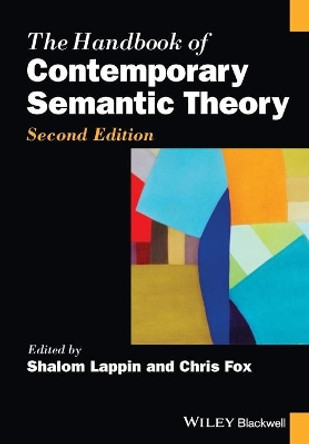Description
The application of deep learning methods to problems in natural language processing has generated significant progress across a wide range of natural language processing tasks. For some of these applications, deep learning models now approach or surpass human performance. While the success of this approach has transformed the engineering methods of machine learning in artificial intelligence, the significance of these achievements for the modelling of human learning and representation remains unclear.
Deep Learning and Linguistic Representation looks at the application of a variety of deep learning systems to several cognitively interesting NLP tasks. It also considers the extent to which this work illuminates our understanding of the way in which humans acquire and represent linguistic knowledge.
Key Features:
- combines an introduction to deep learning in AI and NLP with current research on Deep Neural Networks in computational linguistics.
- is self-contained and suitable for teaching in computer science, AI, and cognitive science courses; it does not assume extensive technical training in these areas.
- provides a compact guide to work on state of the art systems that are producing a revolution across a range of difficult natural language tasks.
About the Author
Shalom Lappin is Professor of Natural Language Processing at Queen Mary University of London, Professor of Computational Linguistics at the University of Gothenburg and Emeritus Professor of Computational Linguistics at King's College London.
Reviews
This book is a very timely synthesis of classical linguistics that the author has worked in for several decades and the modern revolution in NLP enabled by Deep Learning. It also asks provocative foundational questions about whether traditional grammars are the most suitable representations of linguistic structure or if we need to go beyond them.
-- Devdatt Dubhashi, Professor, Chalmers University
Deep neural networks are having a tremendous impact on applied natural language processing. In this clearly written book, Shalom Lappin tackles the novel and exciting question of what are their implications for theories of language acquisition, representation and usage. This will be an enlightening reading for anybody interested in language from the perspectives of theoretical linguistics, cognitive science, AI and the philosophy of science.
-- Marco Baroni, ICREA Research Professor, Facebook AI Research Scientist
This book is a very timely synthesis of classical linguistics that the author has worked in for several decades and the modern revolution in NLP enabled by Deep Learning. It also asks provocative foundational questions about whether traditional grammars are the most suitable representations of linguistic structure or if we need to go beyond them.
-- Devdatt Dubhashi, Professor, Chalmers University
Deep neural networks are having a tremendous impact on applied natural language processing. In this clearly written book, Shalom Lappin tackles the novel and exciting question of what are their implications for theories of language acquisition, representation and usage. This will be an enlightening reading for anybody interested in language from the perspectives of theoretical linguistics, cognitive science, AI and the philosophy of science.
-- Marco Baroni, ICREA Research Professor, Facebook AI Research Scientist
Book Information
ISBN 9780367648749
Author Shalom Lappin
Format Paperback
Page Count 168
Imprint Chapman & Hall/CRC
Publisher Taylor & Francis Ltd
Weight(grams) 660g








